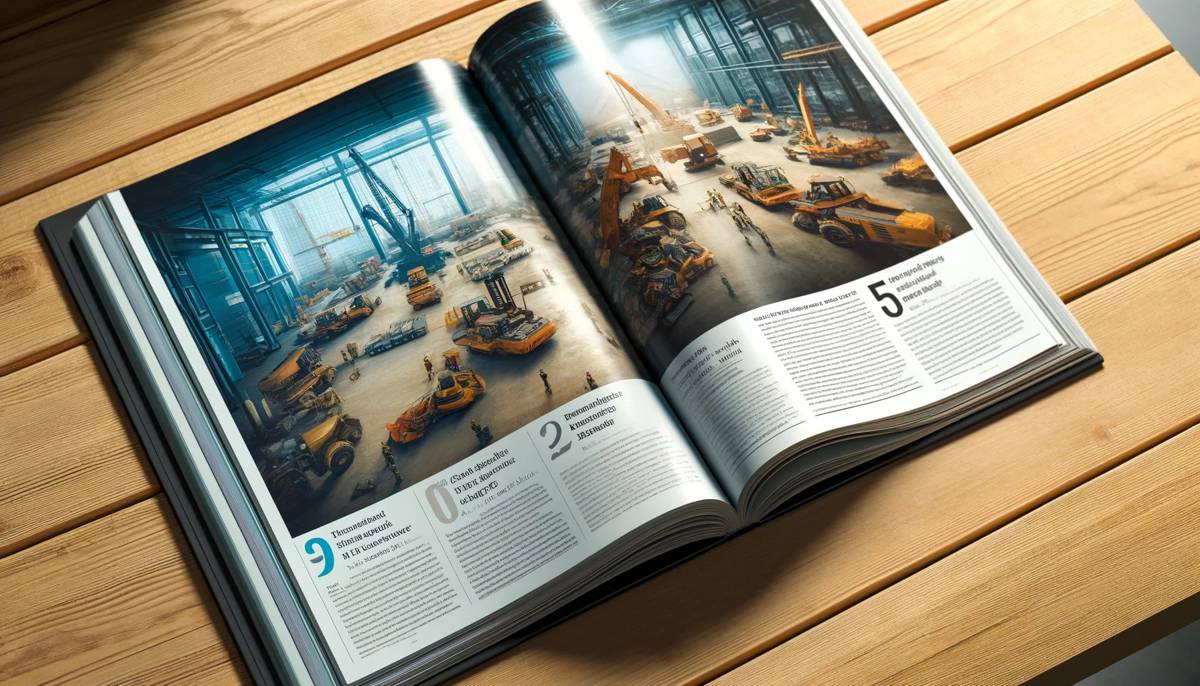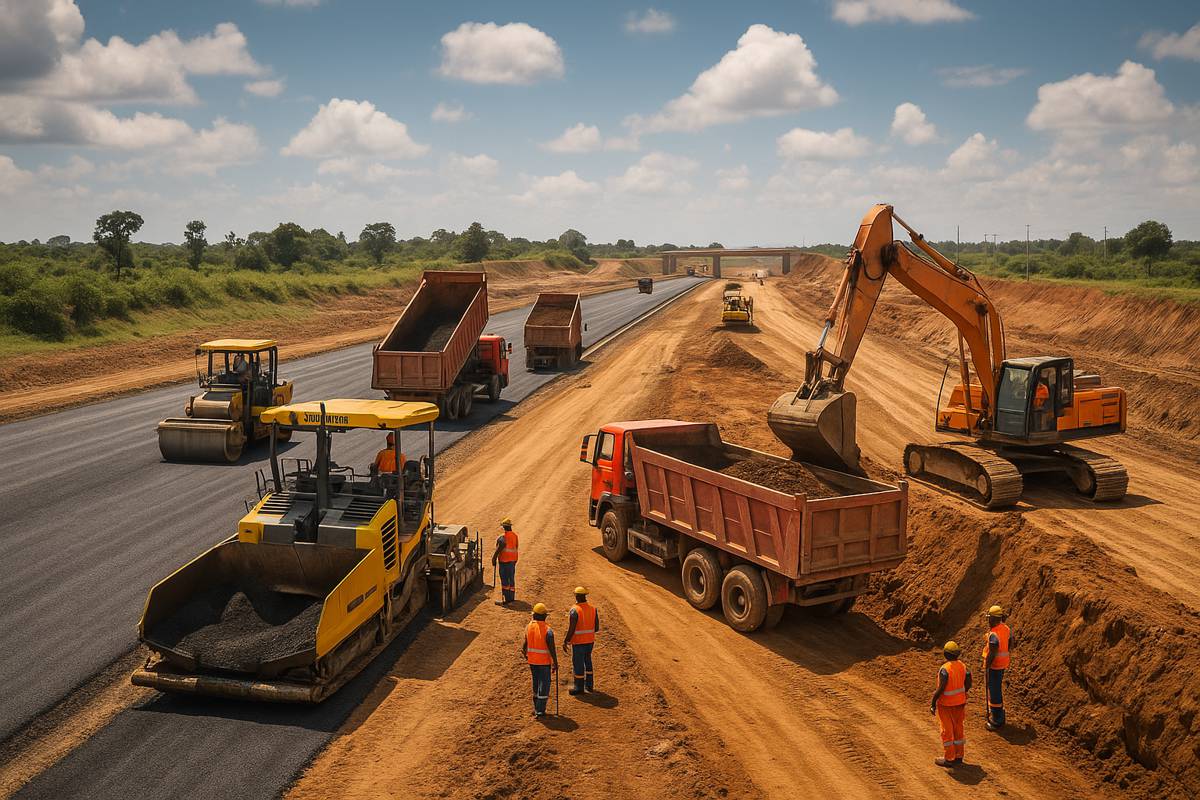Cracking the Code
While crafting a top-notch press release is vital in the construction industry, it’s only half the battle. The real challenge lies in getting it seen and accepted for publication.
This article explores the critical art of ensuring your meticulously prepared press release doesn’t just end up lost in an editor’s overflowing inbox but actually makes it to print or online publication.
Understanding the Editor’s Overloaded Inbox
The Daily Deluge of Press Releases – Imagine starting your day with an inbox flooded with hundreds, if not thousands, of emails—all clamouring for your immediate attention. This is the daily reality for editors in the construction industry. They’re inundated with press releases, pitches, and updates from countless companies, each one eager to have their story featured. Amid this overwhelming volume, even the most compelling stories can slip through the cracks.
Editors have tight deadlines, editorial meetings, and the constant pressure to deliver fresh, engaging content to their readers. They simply don’t have the time to sift through every email in detail. Recognising this reality is crucial for anyone aiming to get their news noticed. It’s not that editors don’t care about your story; it’s that they might not even see it unless it stands out from the crowd.
So, how do you rise above the noise? It starts with understanding their world:
- Time Constraints: Editors often multitask and work under tight schedules. A lengthy or convoluted email may be quickly discarded.
- Relevance: They look for stories that resonate with their audience. If your press release doesn’t align with their interests, it may be overlooked.
- Credibility: With so many submissions, editors rely on trusted sources. Establishing yourself as reliable can make a significant difference.
- Competition: Some days editors receive so much good PR that your submission is just drowned out. Up your game!
By appreciating these factors, you can tailor your approach to better fit their needs and increase the chances of your press release being noticed.
Building Genuine Relationships
In an industry built on connections, forming genuine relationships with editors and journalists can make all the difference. Relationships aren’t built overnight; they require time, effort, and sincerity. A simple “please” and “thank you” in your communications can set a respectful tone, but why stop there?
Consider these strategies to deepen your connections:
- Personalised Communication: Instead of sending out mass emails, take the time to personalise your messages. Address the editor by name, reference a recent article they’ve written, or mention a topic they’ve shown interest in. This shows that you’re not just blasting out emails but are genuinely interested in engaging with them.
- Be a Resource: Offer your expertise for future stories. Let them know you’re available for commentary on industry trends or to provide insights on complex topics. By positioning yourself as a helpful contact, editors may be more inclined to pay attention to your submissions.
- Respect Their Time: Be mindful of deadlines and busy periods. Avoid sending press releases late on Friday afternoons or during known peak times. If you do need to follow up, do so politely and sparingly.
- Provide Value: Share industry insights, reports, or data that might be useful to them—even if it’s not directly related to your company. This generosity can foster goodwill.
Building genuine relationships isn’t about manipulating editors into publishing your content. It’s about creating a mutually beneficial connection where both parties see value. When editors view you as a trusted colleague rather than just another PR contact, your press releases are more likely to receive the attention they deserve.

Supporting the Publications You Value
Beyond the Press Release – If you want publications to pay attention to your news, consider supporting them in other ways. Occasional advertising, sponsorships, or patronage can help you stand out. It’s not about buying their favour but about building a mutually beneficial relationship.
- Advertising Opportunities: Placing ads in their publications demonstrates that you value their platform and audience. It provides them with revenue to continue producing quality content, and in return, your brand gains visibility among a targeted readership.
- Sponsorships: Sponsor a column, podcast episode, or special edition. This not only puts your name front and centre but also shows your commitment to supporting industry journalism.
- Event Participation: Engage in events hosted by the publication, whether as a sponsor, speaker, or attendee. This active participation strengthens your ties and increases your visibility.
- Patronage: Becoming a patron or subscriber can offer exclusive benefits and shows your support for their work. It’s a tangible way to contribute to the sustainability of quality journalism in your industry.
Engaging on Social Media – In today’s digital landscape, social media engagement is a powerful tool. Interacting with the publication’s content on platforms like LinkedIn, X, and Facebook can enhance your relationship.
- Like and Share: Regularly like and share their posts to increase their reach. This small gesture can help build rapport and show that you’re genuinely interested in their content.
- Comment Thoughtfully: Leave insightful comments on their articles or social media posts. Engaging in meaningful discussions can catch the attention of editors and other readers alike.
- Tag and Mention: When sharing relevant content, tag the publication or specific journalists. This not only acknowledges their work but also connects your audience with theirs.
The Personal Touch – Sometimes, it’s the little things that make the biggest impact. Simple gestures can humanise your interactions and leave a lasting impression.
- Holiday Greetings: Sending a personalised Christmas card or holiday greeting can stand out in a world dominated by digital communication. It’s a thoughtful way to express appreciation.
- Congratulate Milestones: Acknowledge their achievements, such as awards, anniversaries, or successful events. A sincere note or message shows that you pay attention and care about their success.
- Express Gratitude: If your press release gets published, take the time to send a thank-you email. Recognising their efforts reinforces a positive relationship.
By supporting the publications you value, you create a symbiotic relationship. Your support helps them thrive, and in turn, they may be more receptive to your news and stories.
Ensuring All Relevant Information Is Included
Make It Easy for the Editor – Editors operate under tight deadlines and with limited bandwidth. If they have to chase you for additional details or assets, they might simply move on to the next press release in their overflowing inbox. To maximise your chances of publication, it’s essential to provide all the necessary information upfront.
- Complete Contact Information: Include your full contact details—name, title, phone number, and email address—so the editor can easily reach you if needed.
- Company Website Links: Provide direct links to your company’s website and any other relevant organisations mentioned in your press release. This allows editors to verify information and gather additional context without extra effort.
- Background Information: Attach a brief company profile or backgrounder that offers insight into your organisation’s history, mission, and key achievements. This can help the editor understand the significance of your news.
Provide Access to Images and Media – High-quality visuals can significantly enhance the appeal of your press release, but only if they are readily accessible.
- Direct Links to Media Assets: Include links to downloadable high-resolution images, videos, or infographics. Use reputable file-sharing services or provide access through your company’s media library.
- Caption and Credit Information: Provide clear captions and credit details for each image or piece of media. This saves the editor time and ensures that assets are used correctly.
- Usage Rights and Permissions: Clearly state any usage rights or restrictions associated with your media assets. Editors need to know that they have permission to publish the images without legal complications.
Anticipate the Editor’s Needs – By putting yourself in the editor’s shoes, you can anticipate what they might require to run your story smoothly.
- Quotes and Testimonials: Include pre-approved quotes from key personnel or stakeholders. This adds depth to your story and saves the editor the step of requesting interviews.
- Relevant Data and Statistics: Provide any supporting data that reinforces the newsworthiness of your story. Ensure that all statistics are accurate and sources are cited.
- Press Release in Editable Format: Attach your press release as a Word document AND include it in the body of the email for easy copying and editing.
Remember, the easier you make it for the editor, the more likely your press release will be considered for publication. By supplying all relevant information and assets upfront, you demonstrate professionalism and respect for their time—qualities that can set you apart in a crowded inbox.
Assessing the Newsworthiness of Your Story
Is It Truly Newsworthy? – Before hitting send, take a step back and evaluate your press release. While it might be significant to your company, will it resonate with a wider audience? Editors seek stories that will engage and inform their readers.
Ask yourself:
- Uniqueness: Does your story offer something new or innovative?
- Impact: Will it affect the industry, community, or public in a meaningful way?
- Relevance: Is it timely and connected to current events or trends?
- Human Interest: Does it have a compelling narrative or emotional appeal?
If the answer is no, consider how you might adjust your angle or whether it’s worth sending at all.
Spinning Your Story Effectively – Sometimes, it’s all about perspective. A standard company announcement can become newsworthy with the right framing.
- Tie into Trends: Connect your news to broader industry trends or societal issues. For example, if you’ve implemented a new sustainable building practice, highlight how it contributes to environmental efforts.
- Highlight Innovation: Emphasise any unique technologies or methods you’re using. Editors are often interested in advancements that push the industry forward.
- Include Quotes and Testimonials: Adding quotes from key stakeholders or satisfied clients can add credibility and human interest to your story.
- Use Data and Statistics: Supporting your news with concrete data can make it more compelling and authoritative.
Crafting a Standout Email Submission
The Irresistible Subject Line – Your subject line is your first—and sometimes only—chance to grab an editor’s attention. It needs to be concise, specific, and intriguing. In reality your subject line has seconds to sell the whole email and press release before an editor deletes it, without even opening the email.
Tips for crafting an effective subject line:
- Be Specific: Clearly state what your press release is about.
- Use Action Words: Start with strong verbs to create excitement.
- Highlight the Benefit: Indicate why the story matters.
- Avoid Clickbait: Misleading subject lines can damage your credibility.
Examples:
- “Innovative Eco-Friendly Concrete Reduces Emissions by 30%”
- “XYZ Construction Wins Award for Community Development Initiative”
An Engaging Opening Sentence – Once your email is opened, the opening sentence must seal the deal. It should immediately convey the essence of your story and entice the reader to continue.
Strategies include:
- Lead with the Most Newsworthy Element: Don’t bury the lead; put the most important information upfront.
- Keep It Concise: Get to the point quickly to respect the editor’s time.
- Use a Compelling Hook: Pose a question, present a surprising fact, or make a bold statement.

Mastering the Five Ws and One H
Who, What, When, Where, Why, and How – At the core of every great press release are these fundamental questions:
- Who is involved?
- What is happening?
- When is it taking place?
- Where is it occurring?
- Why does it matter?
- How will it impact the industry or community?
By thoroughly addressing each point, you provide a complete and engaging narrative.
The Importance of “How” – The “How” adds depth and context to your story. Explaining the processes, challenges overcome, or unique approaches taken can make your press release stand out.
For example:
- Innovative Techniques: Detail how your new construction method reduces costs or improves safety.
- Collaborations: Explain how partnerships with local communities enhance project outcomes.
- Problem-Solving: Describe how you addressed a specific challenge, offering insights that could benefit others in the industry.
Personalising Your Approach
Know Your Audience – Tailor your press release to fit the style and interests of each publication.
- Research the Publication: Understand their focus, tone, and audience.
- Reference Their Work: Mention a recent article or series they’ve published that relates to your story.
- Align Your Angle: Adjust your press release to match the themes they typically cover.
Professional Yet Personable – While maintaining professionalism, don’t be afraid to let some personality shine through.
- Use a Conversational Tone: Write as if you’re speaking to a colleague.
- Be Authentic: Genuine enthusiasm can be infectious.
- Avoid Jargon: Use clear language that can be understood by those outside your company.
Enhancing Your Press Release with Multimedia
High-Quality Visuals – Including visuals can significantly boost the appeal of your press release.
- Images: Provide high-resolution photos of projects, team members, or products.
- Videos: Short clips showcasing your work can be highly engaging.
- Infographics: Visual representations of data can simplify complex information.
Ensure all multimedia elements are professionally produced and relevant to your story.
Providing Additional Resources – Offer supplementary materials that can aid the editor:
- Links to More Information: Direct them to your website, case studies, or previous press releases.
- Biographies: Include background information on key personnel.
- Contact Information: Provide clear details for follow-up questions or interviews.
Timing Is Everything
Considering the Editorial Calendar – Be mindful of the publication’s schedule and current events.
- Seasonal Relevance: Align your news with seasonal topics when appropriate.
- Avoid Busy Periods: Steer clear of sending press releases during major industry events unless they’re directly related.
- Plan Ahead: If your news is tied to a future event, send your press release well in advance.
Following Up Appropriately – If you haven’t received a response after a reasonable time:
- Wait Patiently: Give them at least a week before following up.
- Be Polite: A courteous follow-up email can gently remind them of your submission.
- Don’t Overdo It: Avoid multiple follow-ups, which can be seen as intrusive.
Elevate Your Press Release Strategy
Breaking through the noise in the construction industry requires more than just a well-written press release. It’s about understanding the landscape, building genuine relationships, and presenting your story in the most compelling way possible. By supporting the publications you value—through advertising, sponsorships, or even simple acts like sharing their content—you foster relationships that can open doors. Combine this with a keen sense of newsworthiness and a standout submission, and you’re well on your way to getting published.
I am currently compiling a comprehensive guidebook on this very topic. Packed with tips and advice on cracking the code of press releases and marketing, it’s set to become an invaluable resource for construction professionals eager to make their mark, so keep an eye out—it’s coming soon!



















